“The Rome Collection: Jewels Unveiling Millennia of Stories, Capturing the Essence of the Eternal City.
Architectural details, engraved stones, ancient Roman coins, all elements contributing to a journey back into Rome’s glorious past. The collection roots itself in the rich bond between goldsmith artistry and classical architecture, echoing the temples that once dominated Rome’s skyline, infusing life with spiritual meaning.
These jewels recount the tale of an era where every detail served to unravel life’s mysteries and connect with the divine.
The collection emphasizes the profound interplay between goldsmith artistry and Rome’s cultural heritage. In every tiny gem, millennium-old stories lie dormant, reviving the ancient grandeur of this Eternal City.
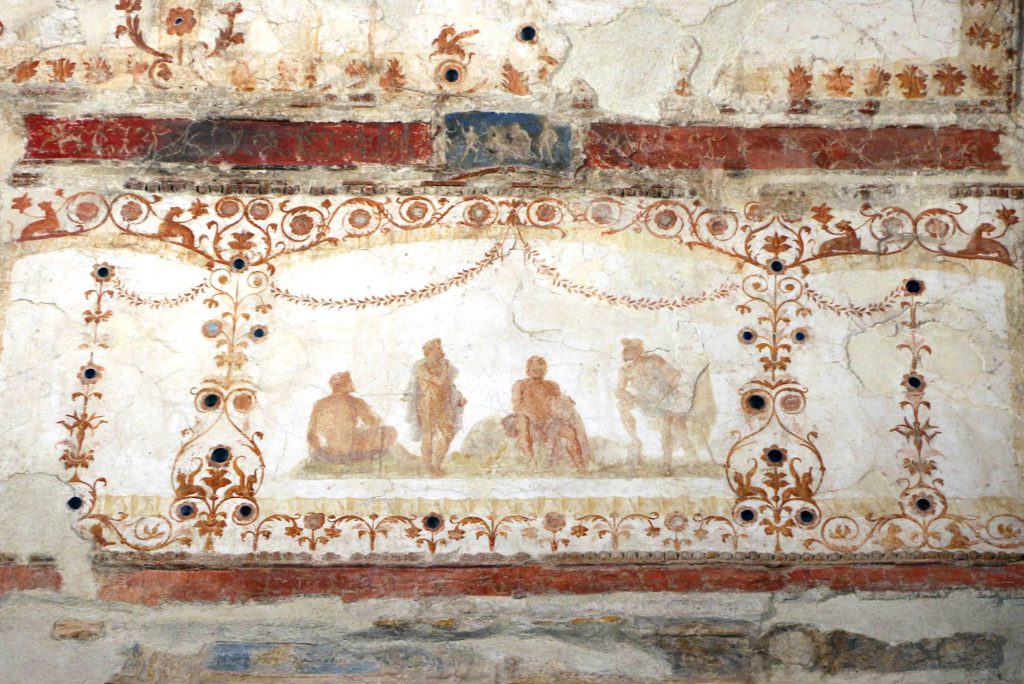
The Capitoline she-wolfs earrings
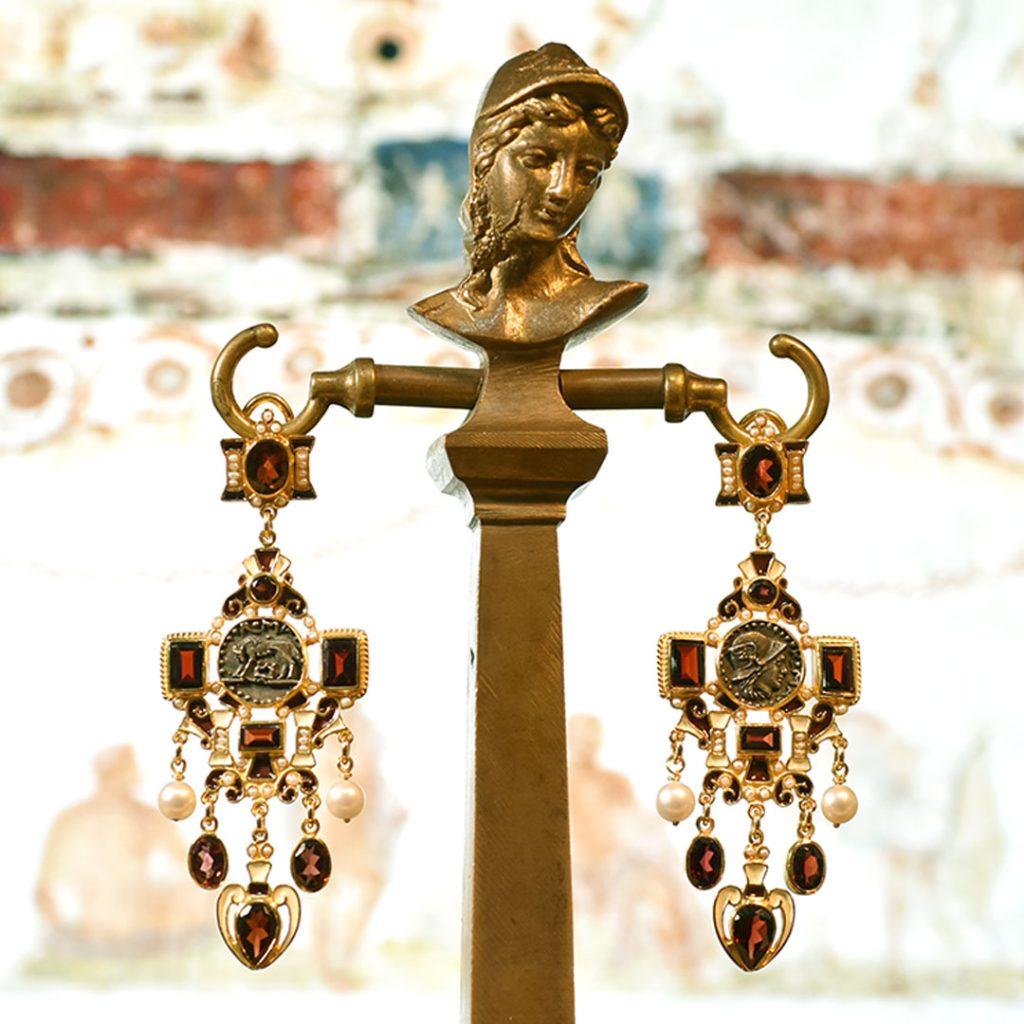
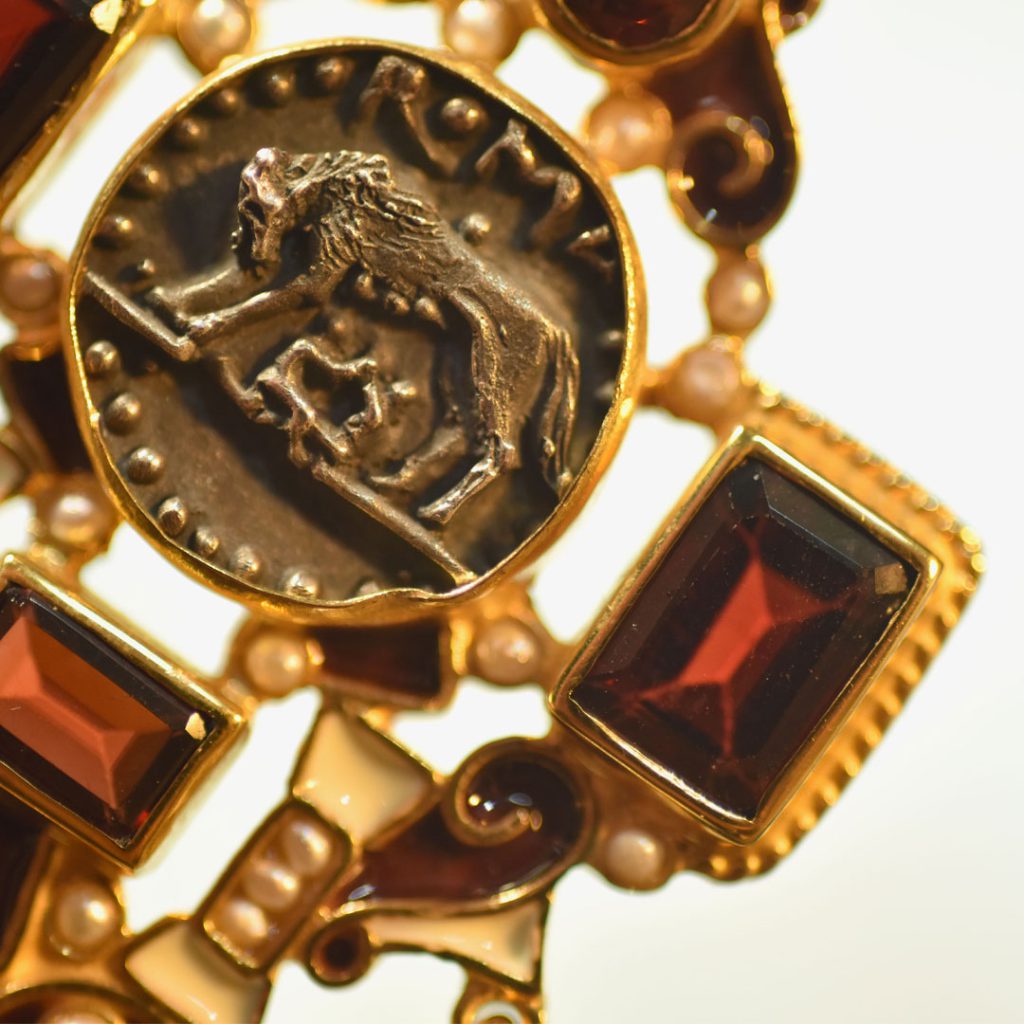
The legend of Rome’s she-wolf, intertwined with the god Mars, comes alive in a jewel capturing the essence of this timeless myth. Celebrating the Capitoline she-wolf as the eternal guardian of Rome, it pays homage to Mars, interweaving the strength of war with the flourishing fertility of this extraordinary city.
The myth recounts the abandonment of twins on the banks of the Tiber River, nurtured by a she-wolf symbolizing maternal generosity and protection. The association with Mars, god of war and fertility, adds a touch of sacredness to the jewel. Mars is often linked to the Capitoline she-wolf, emphasizing the connection between the myth and the foundation of Rome. This invocation of the war deity suggests a celestial protection, an energy permeating the jewel and its wearer.
The Temple of Jupiter Capitolinus
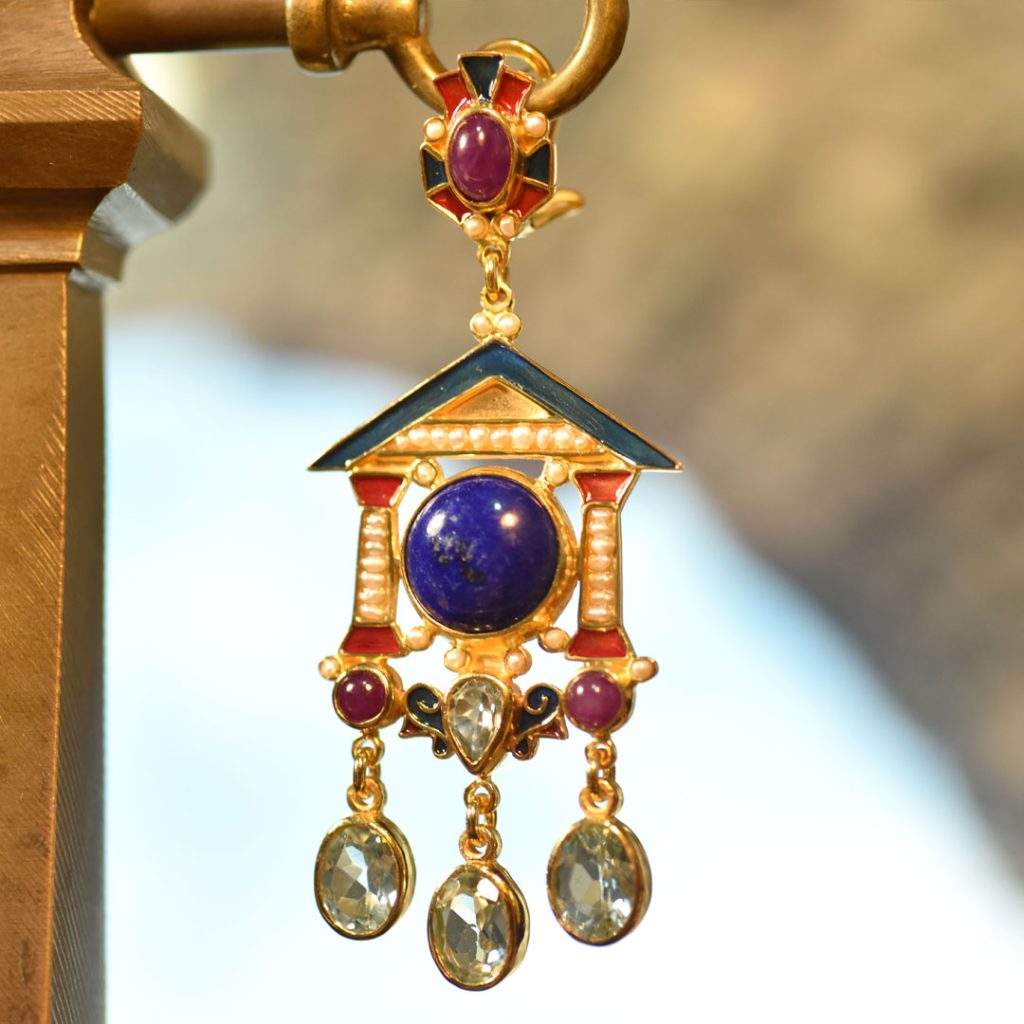
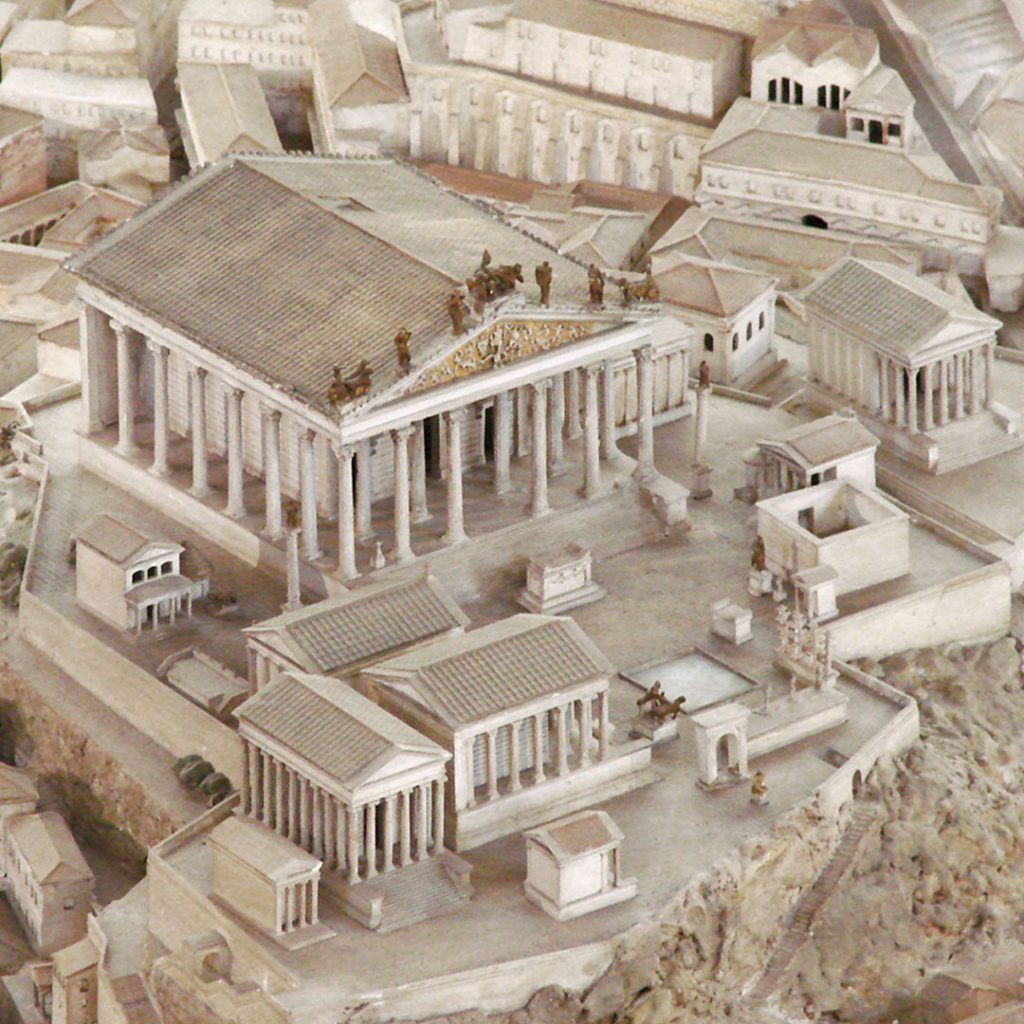
Earrings inspired by the Temple of Jupiter Capitolinus embody the essence of one of ancient Rome’s most crucial sites. They capture the architectural harmony defining the era, uniting the transcendent and the earthly in a singular artistic expression.
Erected on the Capitoline Hill in 509 B.C., the Temple of Jupiter Capitolinus was the focal point of Rome’s religious and political life. Dedicated to the Capitolian Triad composed of Jupiter, Juno, and Minerva, the temple embodied the very essence of the greatness and power of the Roman Republic. Its imposing structure, adorned with colonnades and statuary, reflected the desire to exalt Rome’s grandeur.
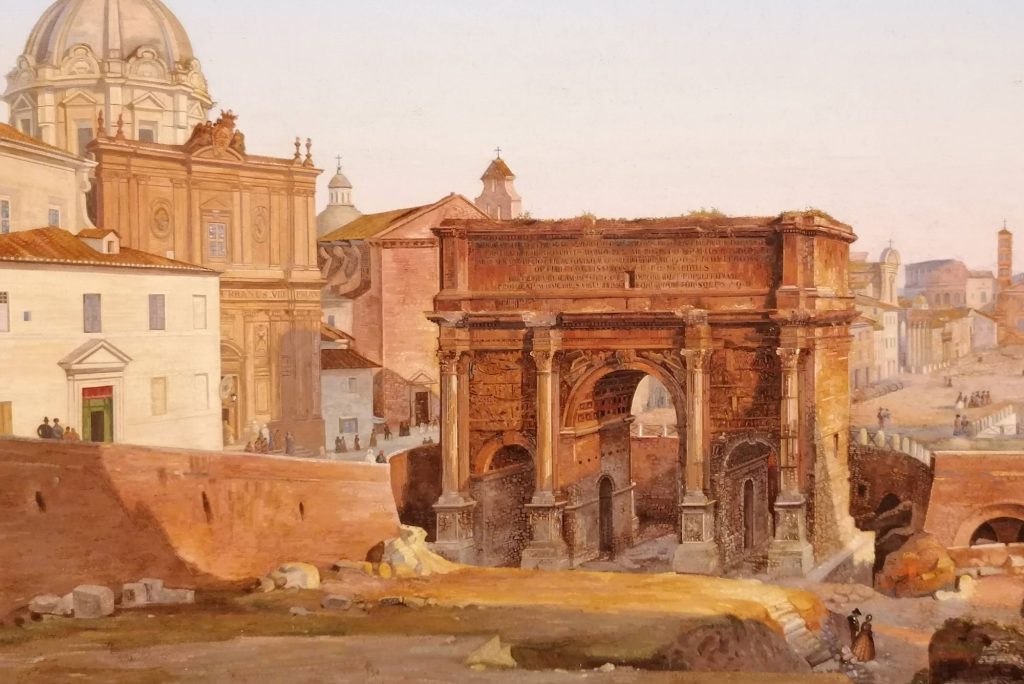
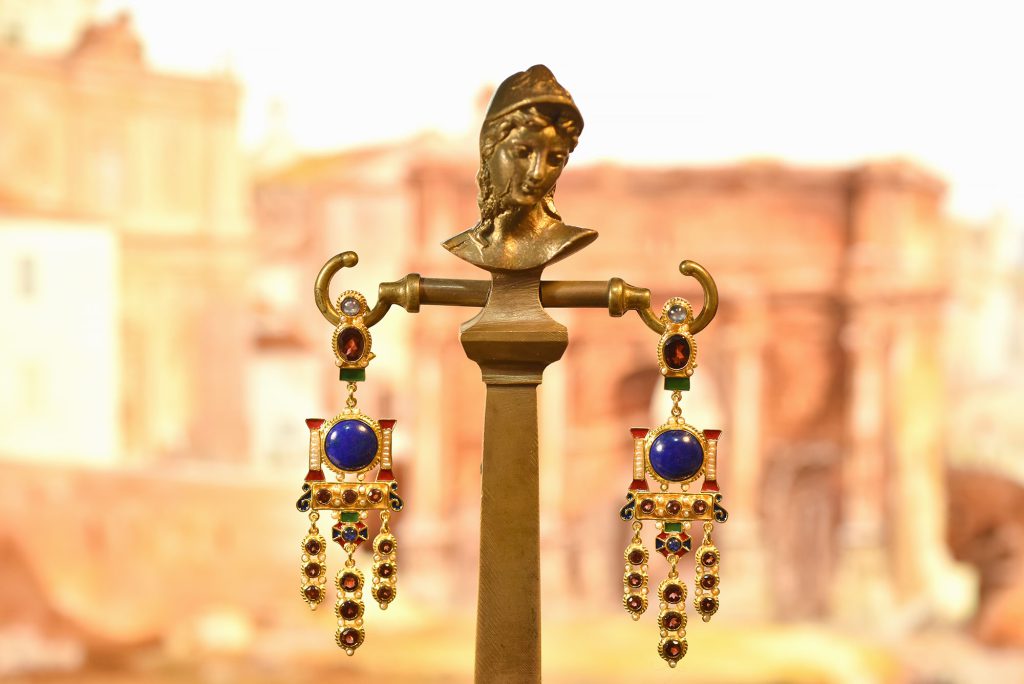
The Domus Aurea pendant
The art of numismatics as historical testimony

Numismatic art, the study and collection of coins, is much more than a simple gathering of currency; it is a journey through time that allows us to immerse ourselves in the stories of the past. Each coin is a tangible testimony of a civilization, a small fragment of history that continues to speak even in the succeeding centuries.
Coins serve as a means through which we can connect with the lives of those who used them, discovering aspects of their daily reality, aspirations, and challenges.
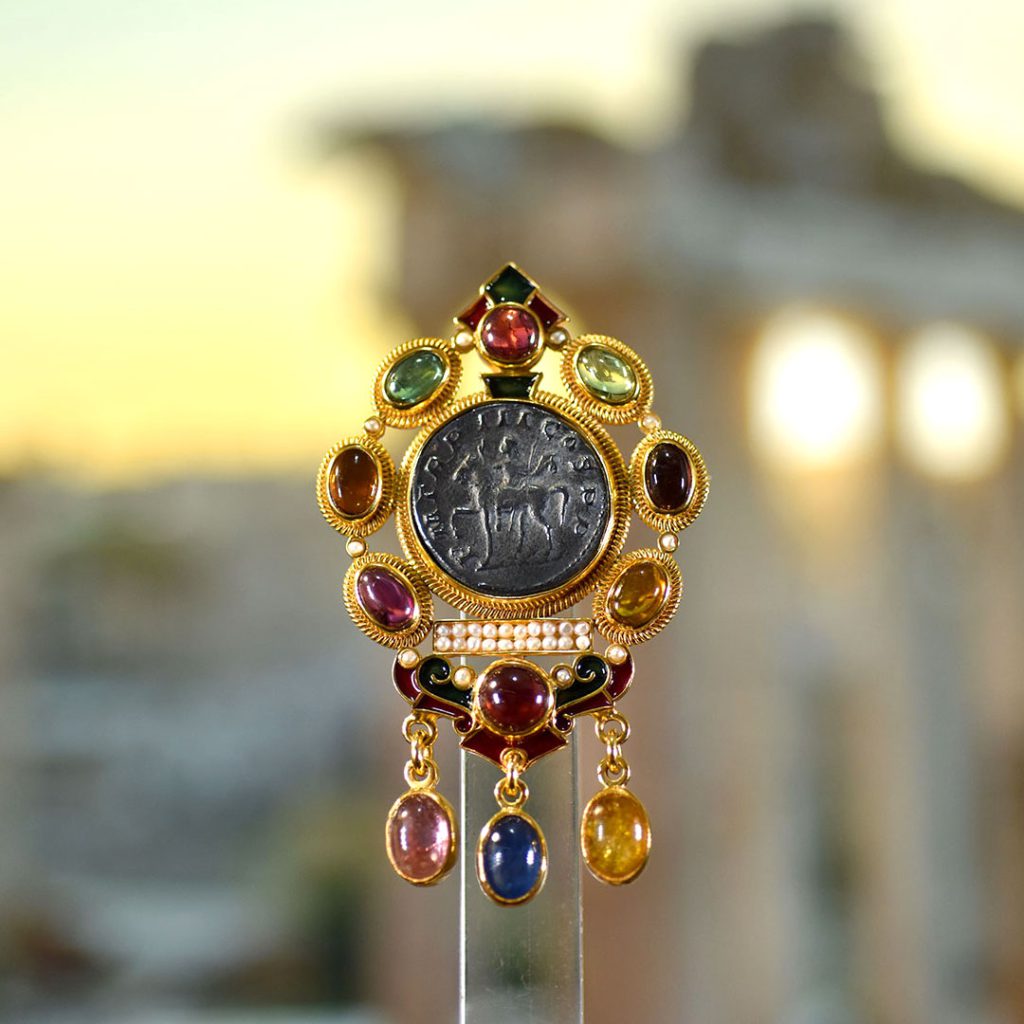
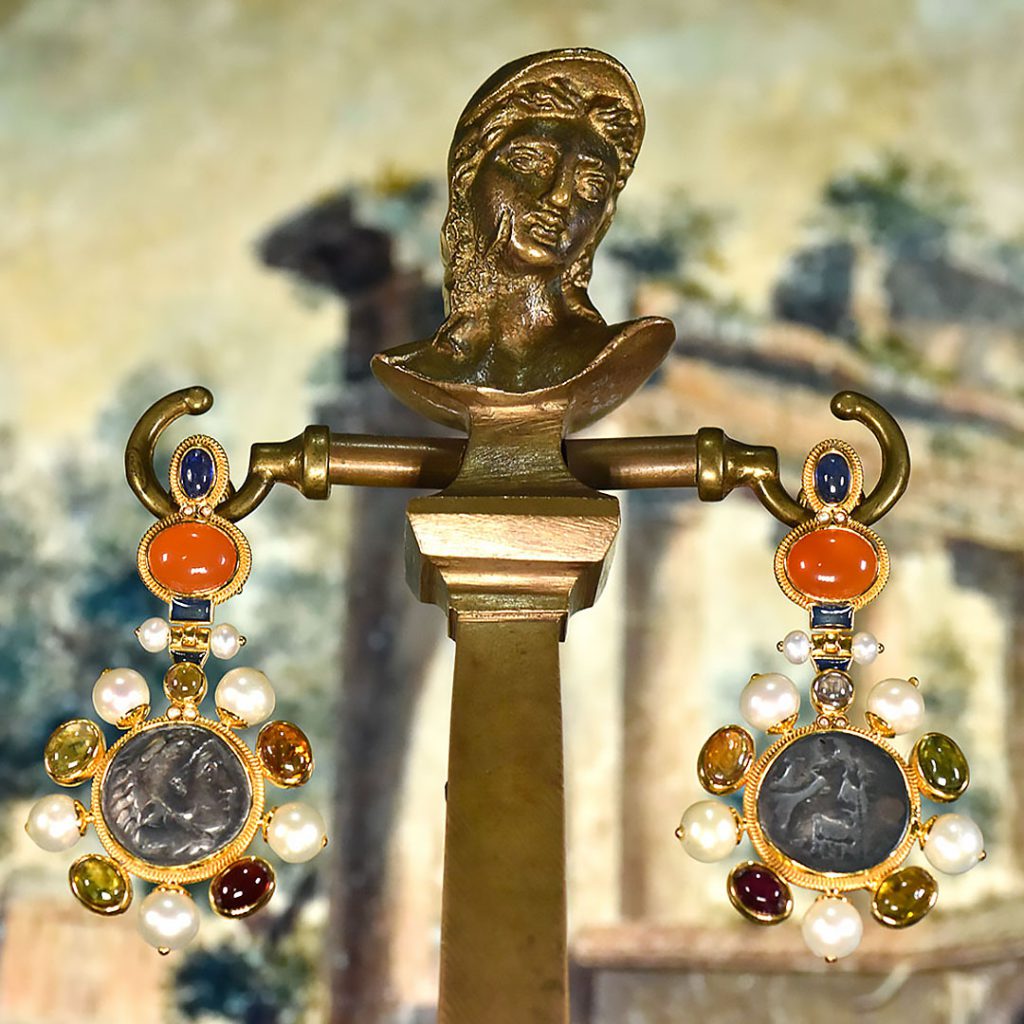
Glyptics – A Silent Witness

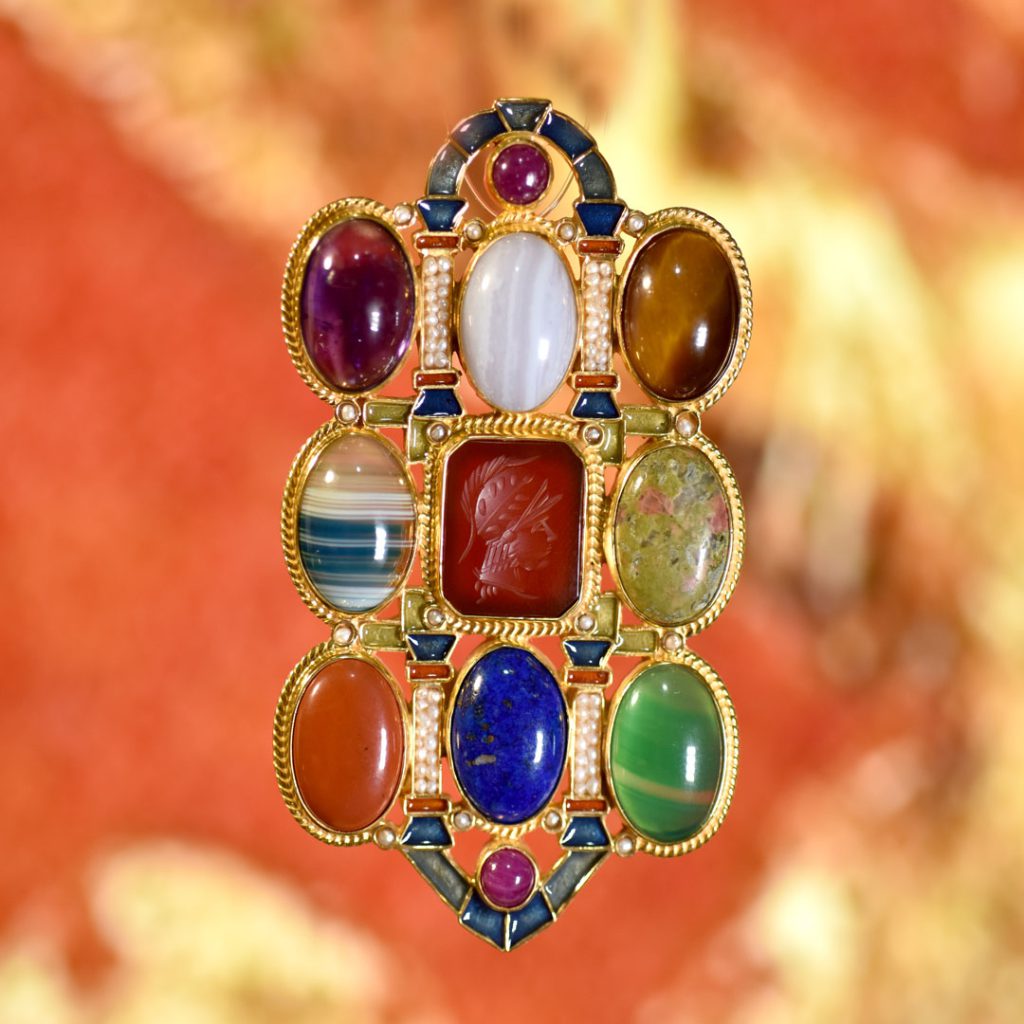
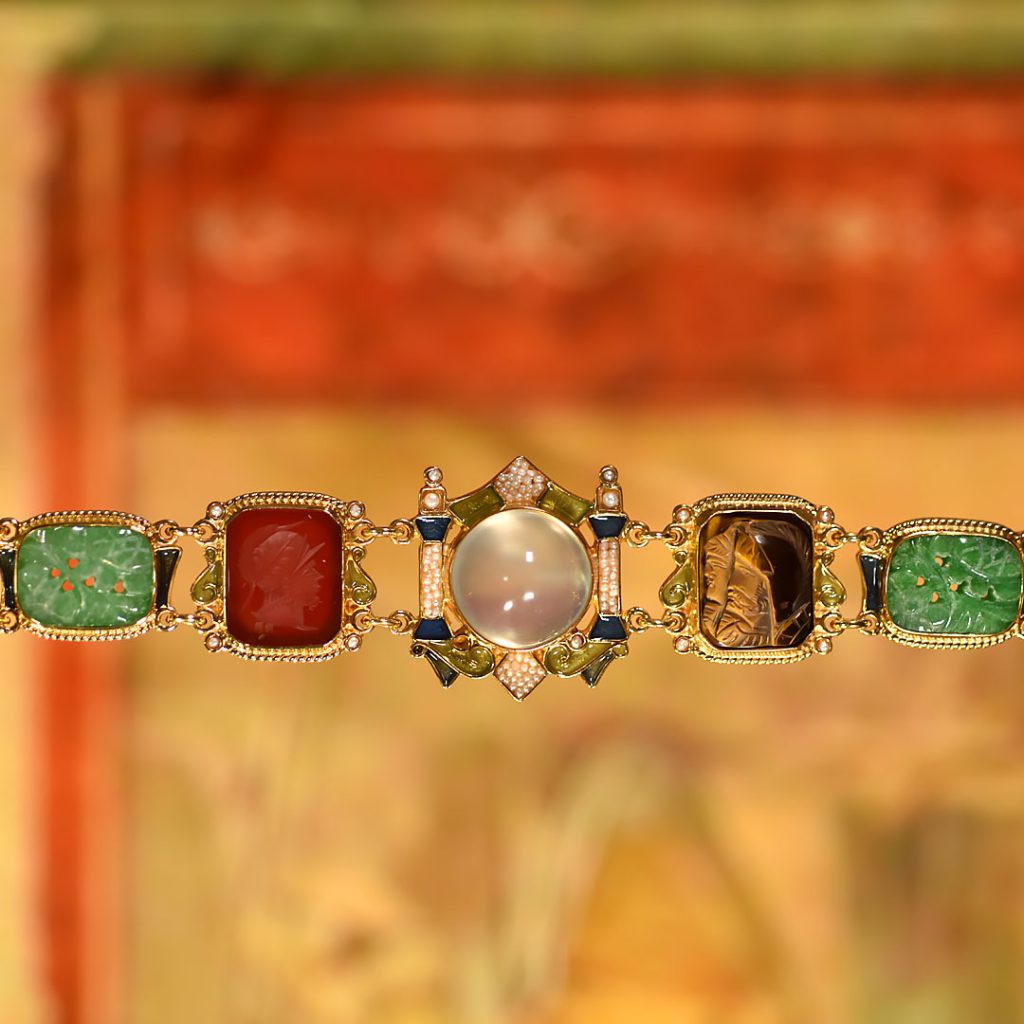
Engraving gems and precious stones, glyptic has played a significant role as a precious historical testimony through the centuries. Originating in antiquity, this art form has left an indelible mark on the understanding of past civilizations, offering precious details about daily life, religion, and social dynamics.
Throughout the centuries, glyptic spread through cultures like Greek and Roman, becoming a sophisticated art form. Engraved gems portrayed mythological figures, scenes of daily life, and portraits of eminent figures. These small masterpieces became tangible evidence of the beliefs, habits, and aspirations of ancient civilizations.
Today, glyptic continues to serve as a silent witness to history. Engravings on gems, preserved in museums and private collections, are authentic time capsules. What may seem like a small piece of stone is, in fact, an open window to the past, narrating stories of vanished civilizations.
In conclusion, glyptic surpasses mere artistic beauty; it is a precious means to understand and appreciate the lives of those who preceded us. Each engraving is a historical testimony etched in stone, a tangible connection to our past.


























